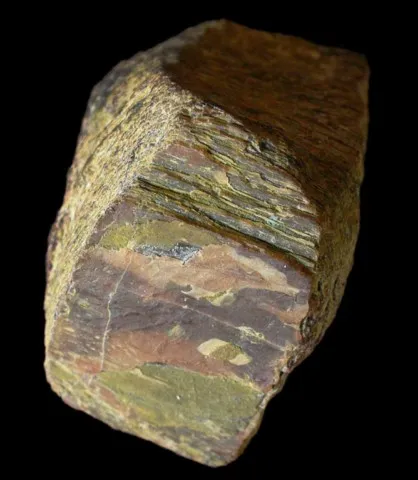GRAFTONITE
Class : Phosphates, arsenates, vanadates
Subclass : Anhydrous phosphates
Crystal system : Monoclinic
Chemistry : (Fe,Mn,Ca)3(PO4)2
Rarity : Uncommon
Graftonite is a phosphate of granitic pegmatites. Its name comes from its location of discovery : Grafton (New Hampshire, USA). It only exceptionally forms very coarse, chunky prismatic crystals, and is found mainly in cleavable masses, measuring up to one meter, salmon pink to reddish brown in color, tarnishing to dark brown through alteration. It accompanies classic primary phosphates (triphyllite, lithiophyllite, etc...) and easily alters into secondary phosphates (sicklerite, heterosite, ferrisicklerite, etc...).
Main photo : Graftonite from Groton, Grafton County, New Hampshire, USA © Peter Haas
Graftonite in the World
Twinning
No twin known for this mineral species.
Fakes and treatments
No fakes recorded for this mineral species.
Hardness : 5
Density : 3.67 to 3.79
Fracture : Irregular to sub-conchoidal
Streak : White to pale pink
TP : Translucent
RI : 1.695 to 1.736
Birefringence : 0.024 to 0.027
Optical character : Biaxial +
Pleochroism : Low
Fluorescence : None
Solubility : Acids
Magnetism : NoneRadioactivity : None

